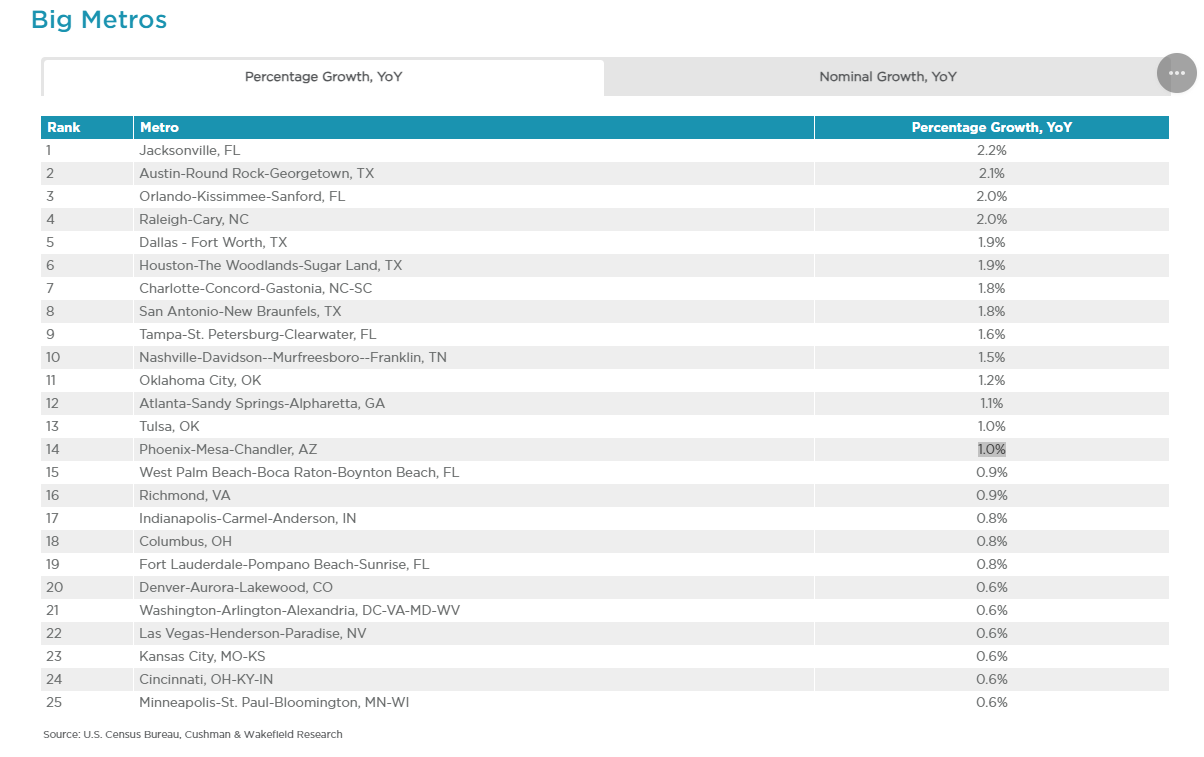Cushman & Wakefield has revealed its latest insights “Breaking Down the Latest Census Data,” providing analysis of the U.S. Census Bureau’s latest data and highlighting key trends affecting commercial real estate with some notable surprises and new patterns emerging.
The U.S. Census Bureau recently released new population estimates that detail growth across the U.S., broken down at a county level. This data highlights key trends affecting commercial real estate across asset classes and continues to drive investment theses. While the overall theme may feel familiar — the southern U.S. continues to see the bulk of the population growth — there are some notable surprises in the data, with new trends emerging for the years ahead.
An important caveat: This data encompasses population changes for the second half of the prior year, and the first half of the given year. In other words, when referring to 2023 population growth, the data referenced would include the second half of 2022 and the first half of 2023.
Unsurprisingly, every major market (population over 1 million) that grew by more than 1% in the U.S. was in the Sun Belt. However, for the first time in 12 years, Austin, Texas, no longer leads the nation in population growth on a percentage basis. The top market is Jacksonville, Florida, which grew at 2.2% — up from 1.5% a year ago and ranked fourth at the time. Austin still ranks second, with 2.1% growth, and remains the fastest-growing major metro in the country since 2020, having grown 7.5% since then. The next fastest-growing market in that time frame is Raleigh, North Carolina, which has grown by 6.5% over that same time frame.
The Denver-Aurora-Lakewood metro ranked #20 of every major market (population over 1 million) in the U.S. with a Percentage Growth, YoY of 0.6% and was #25 with a Nominal Growth, YoY of 12,860.
At the top of the list for nominal population growth are the third- and fourth-largest metros in the country: Dallas-Fort Worth and Houston, Texas. The Dallas-Fort Worth metro grew by about 153,000, equating to 418 people per day. Houston grew by about 140,000, more than twice the growth seen in Atlanta, the third fastest-growing market, which grew by about 69,000 people. The two Texas metros accounted for more than a third of overall population growth among the 60 MSAs with more than 1 million people.
What does this mean for CRE?
Population growth is a near-immediate driver of both retail and multifamily growth. Naturally, understanding this dynamic will prove powerful in keeping investors ahead of the curve. Population growth patterns across the country suggest a need to reconsider market selection and challenge outdated perceptions. For example, markets like Jacksonville, which led the country in population growth, has largely been off investors’ radar compared to other fast-growing metros in Florida. Additionally, core markets like New York, Chicago and Los Angeles, have seen a tide of negative press change investors’ perception of those markets. But the narrative is shifting – each of these markets saw significantly fewer people leave compared to any year since the pandemic began, and markets like Washington, D.C. saw net growth in population. The new data also highlights some smaller metros that are showing outsized growth, which is easy to do with a smaller population base. But Markets like Knoxville, Lakeland, and Provo are growing quickly and may soon join the ranks among the larger MSAs in the country.









